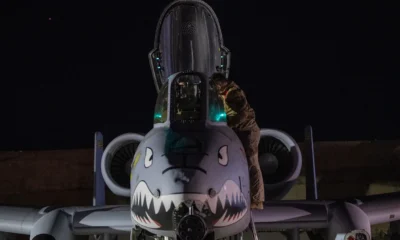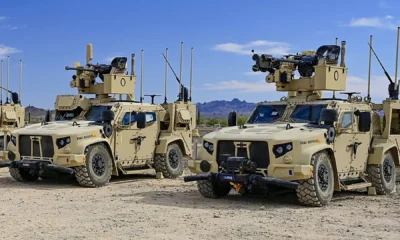TRUMP RALLY SHOOTING
A Moment of Power: Trump’s Visual Strategy Amid Crisis
Turning Vulnerability into Strength Through Imagery
Donald Trump has a remarkable ability to convert his moments of vulnerability into demonstrations of strength through powerful visual imagery. This skill was notably evident during the assassination attempt in Pennsylvania. Trump’s instinctive grasp of visual impact enabled him to turn a potentially devastating incident into a display of defiance and resilience. By showcasing his bloodied yet defiant stance, he reinforced his narrative of enduring strength and unwavering commitment to his supporters. This pattern of leveraging visuals has been a consistent strategy in his political career, enhancing his appeal and maintaining his influence.

Trump’s approach is deeply rooted in a broader historical context where leaders have used imagery to project strength. Figures like Mussolini and Hitler heavily relied on visual propaganda to reinforce their authority. Trump’s background, influenced by his father’s teachings and Roy Cohn’s guidance, emphasized the importance of never showing weakness, a principle that has defined his public persona.
The assassination attempt and Trump’s subsequent portrayal of resilience have significant geopolitical implications. It exacerbates the polarized political climate in the United States, potentially influencing domestic and international perceptions of American stability. Trump’s ability to manipulate such events to his advantage underscores the unpredictable and volatile nature of contemporary U.S. politics.
Trump’s visual strategy resonates with his base, which often feels marginalized and disenfranchised. By embodying resilience and defiance, he connects with supporters who perceive him as a champion against an oppressive system. This dynamic reflects broader socioeconomic divides and the powerful role of imagery in shaping public opinion.
Trump’s adept use of visual imagery could significantly influence the upcoming election, potentially propelling him back to power. His ability to turn crises into moments of strength may rally his base and attract undecided voters, shaping the political landscape and the future of American democracy.
Many of Trump’s supporters see his defiance as a symbol of strength and authenticity, reinforcing their loyalty and belief in his leadership.
Critics argue that his manipulation of imagery is a form of propaganda, masking his shortcomings and perpetuating a divisive political climate.
Neutral observers highlight Trump’s unique ability to control narratives through visuals, recognizing it as a powerful tool in modern political communication.
Donald Trump’s mastery of visual imagery, particularly in moments of vulnerability, remains a defining feature of his political strategy. By transforming potential weaknesses into displays of strength, he continues to maintain and potentially expand his influence, shaping the future trajectory of American politics.
Editor's Pick
Open Letter to President Abdirahman Mohamed Abdullahi Irro

Dear President Irro,
Congratulations on your recent election as the President of Somaliland! As you embark on this significant journey, I write to share my thoughts and insights on building a new government that can elevate Somaliland’s status and secure its rightful place as the 55th state in Africa. This is a pivotal time, not only for Somaliland but also for the broader Horn of Africa,
Your government must be characterized by expertise and excellence, drawing from a diverse pool of scholars and professionals. Prioritize appointing individuals with proven track records in their respective fields, particularly for key roles such as in the Foreign Ministry, which is crucial for advancing Somaliland’s cause on the global stage. Strive to appoint individuals not merely based on clan or political affiliation, but on merit and capability. This approach will demonstrate your commitment to unity and progress, setting a new standard for governance in Somaliland.
While traditional leadership and community elders play a vital role in Somaliland’s political landscape, it is essential to select individuals for government positions carefully. Create a process that values skill over tribal loyalty, ensuring that your cabinet members can effectively carry out their duties while gaining the trust of the public. Seek out talent among the diaspora and within communities who have the necessary expertise and vision to aid in your government’s goals.
Adopt a governance model built on transparency and accountability. Establish systems that encourage public participation in decision-making processes. This could include regular town hall meetings and avenues for citizen feedback. By fostering an environment where the population feels heard and valued, you can build a stronger, more united Somaliland.
In addition to filling key positions with qualified individuals, develop a robust diplomatic strategy. Engage with potential allies and partners who recognize Somaliland’s aspirations for international recognition. Utilize skilled diplomats who can articulate Somaliland’s vision and navigate complex geopolitical landscapes, enhancing Somaliland’s standing in the global community.
Articulate a comprehensive development plan that addresses the economic, social, and infrastructural needs of Somaliland. Focus on initiatives that not only boost economic growth but also promote education, health, and sustainable practices. Your administration should work closely with local communities to ensure that development initiatives reflect the needs and aspirations of the people, fostering a sense of ownership.
Recognize the importance of the Somaliland parliament in your efforts. Collaborate with both houses to ensure that your legislative agenda aligns with national priorities. Encourage constructive dialogue between the executive and legislative branches to foster cooperative governance. While the current parliament may be supportive, this cooperation should be focused on policies that benefit all Somalilanders, regardless of their political affiliation.
Your presidency presents an extraordinary opportunity to reshape the political landscape of Somaliland. By focusing on expertise, inclusivity, accountability, and constructive diplomacy, you can create a legacy that not only achieves national recognition but also builds a stable, prosperous home for all Somalilanders. Remember, history will remember your ability to unite and lead with vision and purpose.
In conclusion, as you take these initial steps to form your government, I urge you to prioritize the values of meritocracy, transparency, and inclusiveness. These principles will serve as the bedrock of your administration and will be essential as Somaliland continues its journey towards full recognition on the international stage.
Wishing you wisdom and success,
SOMALILANDER
TRUMP RALLY SHOOTING
Secret Service Agents Reassigned Following Trump Assassination Attempt
Five Agents on Administrative Leave Amid Investigation into Security Breach
At least five Secret Service agents have been reassigned to administrative duties following the attempted assassination of former President Donald Trump on July 13, according to a law enforcement official who spoke to The Associated Press under anonymity. The reassignment includes the special agent in charge of the Pittsburgh field office and three other agents from that office, which was responsible for security planning for Trump’s rally in Butler, Pennsylvania.
The reassigned agents are on administrative leave, meaning they are currently barred from performing any investigative or protective duties. One of the five agents had been directly assigned to Trump’s protective detail. The reassignment is part of a broader response to the security lapse that allowed a man armed with an AR-style rifle to get close enough to shoot Trump.
Trump was struck in the ear but escaped serious injury, although the attack resulted in the death of one spectator and injuries to two others. The incident exposed significant flaws in the Secret Service’s security arrangements and led to the resignation of Secret Service Director Kim Cheatle.
During a congressional hearing following the attack, Cheatle admitted that the Secret Service had been alerted to a suspicious individual multiple times before the shooting. She also disclosed that the roof from which the shooter, Thomas Matthew Crooks, opened fire had been identified as a potential security vulnerability days before the event.
Acting Secret Service Director Ronald Rowe Jr., who assumed the role after Cheatle’s resignation, has expressed difficulty in justifying why the identified vulnerability was not addressed more effectively. The incident remains under investigation as officials seek to understand how such a significant breach occurred and to prevent future lapses in security.
TRUMP RALLY SHOOTING
Iranian Plot to kill US Officials, Politicians Tied to Pakistani Man

A thwarted Iranian scheme to assassinate former President Trump and other officials highlights Tehran’s ongoing retaliatory measures.
The U.S. Justice Department has unsealed charges against Asif Merchant, a 46-year-old Pakistani national with ties to Iran, for his role in a plot to assassinate former President Donald Trump and other high-profile U.S. officials. This development underscores Tehran’s continued efforts to retaliate for the 2020 U.S. drone strike that killed Qassem Soleimani, a top Iranian general.

Asif Merchant
According to the criminal complaint, Merchant traveled to the United States in April, seeking hitmen for multiple assassination targets. The plan collapsed when the individual Merchant contacted turned out to be a law enforcement informant. FBI Director Christopher Wray described the scheme as “a foreign-directed plot to kill a public official,” emphasizing its threat to national security.
The complaint does not specify the intended targets, but it closely follows heightened security measures for former President Trump due to a known threat from Tehran. This connection was confirmed by Representative Mike Turner, chairman of the House Intelligence Committee, who had previously been briefed on the threat.
This incident is part of a series of Iranian attempts to target American figures. In January, three men were charged in a plot to murder two Maryland residents. Other notable targets have included Masih Alinejad, a human rights activist, and former National Security Adviser John Bolton. Many of these plots are seen as retribution for Soleimani’s death.
Attorney General Merrick Garland emphasized the Justice Department’s commitment to thwarting such plots and holding perpetrators accountable. Despite these efforts, U.S. officials anticipate continued threats from Iran. FBI Director Wray highlighted the persistent and brazen nature of these threats, warning of more attempts in the future.
Experts like Behnam Ben Taleblu from the Foundation for Defense of Democracies caution against underestimating these plots, regardless of how amateurish they may seem. The frequency and persistence of these attempts indicate a serious and ongoing threat from Tehran.
The unsealed charges against Asif Merchant illuminate a broader strategy by Iran to retaliate against the U.S. for past actions. This thwarted plot underscores the importance of vigilance and international cooperation in countering such threats, emphasizing that the danger posed by state-sponsored terrorism remains a pressing concern for national security.
TRUMP RALLY SHOOTING
U.S. Intelligence Uncovers Iranian Assassination Plot Against Trump
Secret Service Tightens Security Amid Iranian Plot as Trump Narrowly Escapes Assassination Attempt
The Trump campaign’s rally in Butler, Pennsylvania, on Saturday was marred by a near-fatal shooting incident, which has now been linked to heightened security concerns over a potential Iranian assassination plot. U.S. intelligence agencies, tracking a credible threat against former President Donald J. Trump, had prompted the Secret Service to bolster security measures in the weeks leading up to the rally. Officials emphasized that this intelligence was unrelated to the actual shooting that left Trump wounded.
The chilling intelligence, which had been under close scrutiny by U.S. agencies, suggested a plot by Iran to target Trump. The threat, deemed significant, led to an escalation in security protocols for the former president’s public appearances. Despite these efforts, a 20-year-old local man managed to climb atop a nearby warehouse roof and open fire, grazing Trump’s right ear and nearly claiming his life.
In response to the intelligence, the Secret Service implemented additional protective measures for Trump’s outdoor campaign rally in Butler. However, these enhancements were insufficient to prevent the young assailant from executing his attack. The incident highlighted the unpredictable nature of security threats and the challenges faced by protective services in safeguarding high-profile figures.
The Trump campaign was briefed about the assassination threat shortly before the shooting occurred, according to a person with knowledge of the situation. This briefing underscored the severity of the intelligence and the imminent danger perceived by security officials.
Peter Baker, the chief White House correspondent for The Times, reported on the incident, noting the complex interplay between ongoing security threats and the political landscape. Baker, who has covered the last five presidents, often provides analytical pieces that contextualize presidential administrations within a broader historical framework.
As Trump recovers from the assassination attempt, questions loom over the efficacy of the current security measures and the potential for further threats. The intersection of domestic violence and international plots poses a significant challenge for security agencies tasked with protecting former and current leaders.
This harrowing event serves as a stark reminder of the persistent and evolving threats faced by public figures, particularly those with a contentious political legacy. The ability of a lone gunman to bypass enhanced security protocols and come perilously close to assassinating a former president underscores the need for continuous evaluation and adaptation of protective strategies.
The Iranian plot, while not directly connected to the rally shooting, remains a critical focus for U.S. intelligence agencies. The ramifications of such threats extend beyond individual security, touching on broader issues of national security and international relations. The Secret Service and other agencies must now navigate the dual pressures of addressing immediate physical threats while managing the geopolitical implications of international assassination plots.
As the investigation continues, the resilience of the security apparatus and the vigilance of intelligence agencies will be paramount in preventing future incidents. The near-miss in Butler serves as a sobering reminder of the dangers that linger on the fringes of political life and the relentless efforts required to thwart them.
TRUMP RALLY SHOOTING
Explosive Demand: Congress Grills Secret Service Over Trump Assassination Attempt
National Shockwave as Lawmakers Seek Answers in Wake of Failed Attack on Former President Trump
In the aftermath of an attempted assassination on former President Trump, Congress demands answers from the Secret Service regarding critical security failures. Controversy and intense scrutiny loom as investigations unfold.
As the dust settles from the shocking attempted assassination of Donald Trump at a Pennsylvania rally, the U.S. Secret Service faces blistering scrutiny. How could an armed assailant get so close to a former president? This unprecedented breach has sparked a firestorm of controversy, with lawmakers across the spectrum demanding accountability.
During a campaign rally in Butler, Pennsylvania, Trump was delivering his speech when chaos erupted. Thomas Matthew Crooks, a 20-year-old armed with an AR-15-style rifle, managed to reach the rooftop of a nearby building, just 137 meters from Trump. Despite eyewitnesses alerting nearby law enforcement, Crooks fired multiple shots, injuring Trump and others before being neutralized by a Secret Service sniper. This incident, the first since Ronald Reagan’s shooting in 1981, has thrust the Secret Service into the spotlight, questioning its competence and protocols.
House Oversight Committee Chairman James Comer immediately voiced the public’s burning questions: “How could this happen?” Congress is mobilizing for extensive investigations, with hearings scheduled to grill Secret Service Director Kimberly A. Cheatle. Speaker of the House Mike Johnson vowed a thorough probe, highlighting the glaring security lapses.
House Homeland Security Committee Chairman Mark Green and Senate Homeland Security & Governmental Affairs Committee leaders Gary Peters and Rand Paul are spearheading parallel investigations. Their focus: how did an armed assailant access a vantage point so perilously close to the president? The committees are demanding detailed documentation and swift answers.
The shooting has intensified political rhetoric, with Republicans and Democrats trading barbs. Newly minted vice-presidential candidate JD Vance pointed fingers at President Biden, accusing his administration’s rhetoric of inciting violence against Trump. Although Vance’s claims lack concrete evidence, they underscore the deeply polarized political climate.
President Biden called for an independent review of the Secret Service’s procedures. Cheatle has pledged full cooperation, yet the agency’s reputation hangs in the balance. Can they restore public trust and prevent future threats? The pressure is mounting as the nation watches closely.
This attack has not only shaken the Trump campaign but also ignited a national conversation about the safety of political leaders. As Congress digs deeper, the revelations promise to be as explosive as the incident itself. With multiple investigations underway, the Secret Service’s practices and the broader implications for national security are under the microscope.
In this high-stakes drama, the American public awaits answers, accountability, and reassurance that such a breach will never happen again. The fallout from this near-tragedy will likely reverberate through the halls of power and the 2024 presidential race, leaving an indelible mark on the political landscape.
TRUMP RALLY SHOOTING
Secret Service not making changes to RNC security plan
Former Secret Service agent Tim Miller discussed his take on mounting scrutiny over Secret Service’s handling of the Trump assassination attempt and his reaction to Director Kimberly Cheatle admitting in an interview DEI was a focus for the agency.
TRUMP RALLY SHOOTING
Russia Exploits Trump Assassination Attempt, Predicts U.S. Collapse
Kremlin Accuses Biden of Endangering Trump, Foresees American Civil War
In a sensational twist, Russia seizes on the Trump assassination attempt to denounce American democracy and predict a civil war. Kremlin spokespersons blame Biden and stoke fears of U.S. dissolution.
Russia has seized upon the recent assassination attempt on former U.S. President Donald Trump to deliver a scathing critique of American democracy. In a provocative narrative, the Kremlin has accused President Joe Biden and the Democratic Party of creating an atmosphere that endangered Trump’s life, describing it as a “suicide of democracy” and ominously predicting a civil war and the eventual dissolution of the United States.
Kremlin press secretary Dmitry Peskov was quick to blame Biden, suggesting that attempts to legally and politically neutralize Trump had provoked the assassination attempt. “Biden and the Democrats have put Trump’s life in ‘obvious’ danger,” Peskov claimed, accusing them of failing to remove Trump from the race through legal means and instead inciting violence.
The FBI has identified Thomas Matthew Crooks, a 20-year-old from Bethel Park, Pennsylvania, as the suspect in the attempt on Trump’s life. Biden responded to the incident, condemning the violence and asserting it was “contrary to everything we stand for as a nation.” However, the Kremlin’s narrative pushes a darker view, questioning the integrity of American democracy itself.
Leading Russian figures and media outlets have echoed this sentiment, painting the assassination attempt as evidence of a flawed and corroded democratic system. Maria Zakharova, a spokesperson for the Russian Foreign Ministry, declared that American democracy had been driven to the brink of suicide by liberal forces. State news agency RIA Novosti’s top propagandist, Piotr Akopov, took it a step further, suggesting that Trump’s enemies in the Democratic Party had long regretted not eliminating him before his 2016 victory.
Akopov’s incendiary commentary went further, speculating that the Secret Service’s delayed response to the shooter was deliberate, as “killing Trump” had become the only viable option for what he referred to as the “deep state Washington swamp.” This conspiracy-laden narrative is a hybrid of propaganda and disinformation, designed to undermine confidence in American institutions.
On social media, Russian embassies and consulates worldwide have amplified these narratives. The Russian Embassy in South Africa notably posted a photo of a bloodied Trump, accusing the Democrats of being capable of any crime to achieve their goals. This prompted reminders of Russia’s own controversial history with political violence, including the assassination of Alexey Navalny, a fierce critic of President Vladimir Putin.
Navalny’s death in prison and allegations of his poisoning by Russian intelligence are stark contrasts to the Kremlin’s critique of American democracy. These accusations against Putin underscore a regime that has systematically oppressed political opposition and eroded civil liberties.
Russia’s manipulation of the Trump assassination attempt highlights its strategy of exploiting American political turmoil to push its own agenda. By predicting the collapse of the United States and stoking fears of civil war, the Kremlin seeks to destabilize perceptions of American stability and democracy. This incident serves as a potent reminder of the ongoing information warfare and the lengths to which Russia will go to undermine its adversaries.
In this era of heightened political tension, the narratives spun by both the Kremlin and the Western media illustrate the complex dynamics of international propaganda and the battle for global influence. The assassination attempt on Trump, while a tragic event, has become a tool in this larger geopolitical struggle, with Russia positioning itself as a critic of American democracy while glossing over its own authoritarian practices.
TRUMP RALLY SHOOTING
Trump Rally Shooting Unveils Deep National Threats
The Shocking Assassination Attempt at Trump’s Pennsylvania Rally Exposes an Alarming Rise in Political Violence and National Security Concerns.
The assassination attempt on Donald Trump at a Pennsylvania rally underscores a deeply polarized U.S. political landscape, highlighting rising threats of violence and the potential for escalating tensions.
Gunshots at a Trump rally in Butler, Pennsylvania, sent shockwaves through an already tense nation. This assassination attempt on former President Donald Trump, who is poised to secure the GOP nomination for the 2024 election, has intensified national security concerns that have been simmering for years.
Late Saturday, New York Mayor Eric Adams announced a surge in police presence “out of an abundance of caution,” as the shooting not only resulted in one death but also left Trump with a grazed ear. “The events that unfolded at today’s rally in Pennsylvania are horrific,” Adams posted on X, emphasizing that political violence is unacceptable.
This act of violence brings into sharp focus the warnings from the U.S. Homeland Security Department dating back to January 2021, following the Capitol breach. The most recent assessment in September flagged a “high risk” of attacks, specifically targeting the 2024 elections and related personnel. These predictions have materialized in the most unsettling manner.
Colin Clarke, director of research at The Soufan Group, remarked, “Tensions have been building on both sides of the political spectrum and extremists have taken root,” suggesting that the shooting might exacerbate the volatility in the coming weeks. The deep-rooted anger across political divides has created a fertile ground for such violent acts.
Rachel Kleinfeld from the Carnegie Endowment for International Peace pointed out that political violence threats have been escalating, impacting politicians at all levels. “It will take more than increased security to keep additional violence at bay,” she said, urging political leaders to make strong statements condemning all forms of political violence.
FBI Director Christopher Wray’s June testimony to lawmakers highlighted the ongoing peril, describing the domestic terrorist threat as “persistent and significant.” This environment is further poisoned by attempts from foreign entities like Russia and Iran, which aim to inflame U.S. social tensions ahead of the elections.
An assessment by the U.S. Office of the Director of National Intelligence accused Moscow of seeking to “amplify domestic divisions” and Tehran of acting as a “chaos agent,” further undermining confidence in U.S. democratic institutions. While it remains under investigation how these factors influenced the shooting, the timing and nature of the attack suggest a dangerous culmination of these divisive tactics.
Experts like Clarke warn that this incident might spiral into further violence, potentially characterizing the remainder of the election season. The assassination attempt on Trump has not only heightened immediate security measures but has also cast a long, dark shadow over the democratic processes.
In response, political figures across the spectrum have called for unity and condemned the attack. Yet, the underlying issues – a polarized electorate, extremist ideologies, and foreign interference – continue to fester. The coming months will test the resilience of American democracy and the nation’s ability to navigate through this perilous landscape without descending into further chaos.
As the investigation unfolds, the country stands at a critical juncture, where each act of violence could potentially escalate into broader conflict, reminding us just how fragile the thread of civility can be in times of deep political division.
-

 Analysis10 months ago
Analysis10 months agoSaudi Arabia’s Billion-Dollar Bid for Eritrea’s Assab Port
-

 Opinion17 years ago
Opinion17 years agoSomaliland Needs a Paradigm Change: Now or Never!
-
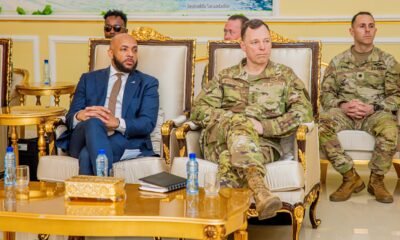
 Interagency Assessment5 days ago
Interagency Assessment5 days agoTOP SECRET SHIFT: U.S. MILITARY ORDERED INTO SOMALILAND BY LAW
-

 ASSESSMENTS9 months ago
ASSESSMENTS9 months agoOperation Geel Exposes the Truth: International Community’s Reluctance to Embrace Somaliland as a Strategic Ally
-
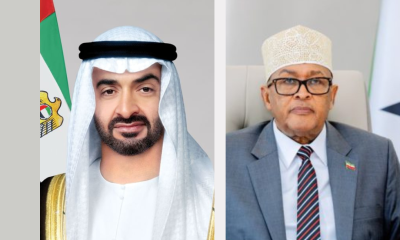
 Somaliland11 months ago
Somaliland11 months agoSomaliland and UAE Elevate Ties to Comprehensive Strategic Partnership
-

 EDITORIAL1 year ago
EDITORIAL1 year agoDr. Edna Adan Champions the Evolving Partnership Between Somaliland and Ethiopia
-
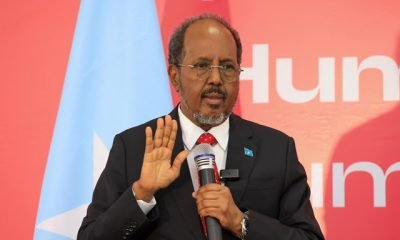
 ASSESSMENTS6 months ago
ASSESSMENTS6 months agoA Critique of the Hassan Sheikh Mohamud Administration and the Halane Enigma
-

 Africa2 years ago
Africa2 years agoHow Somaliland Could Lead the Global Camel Milk Industry


